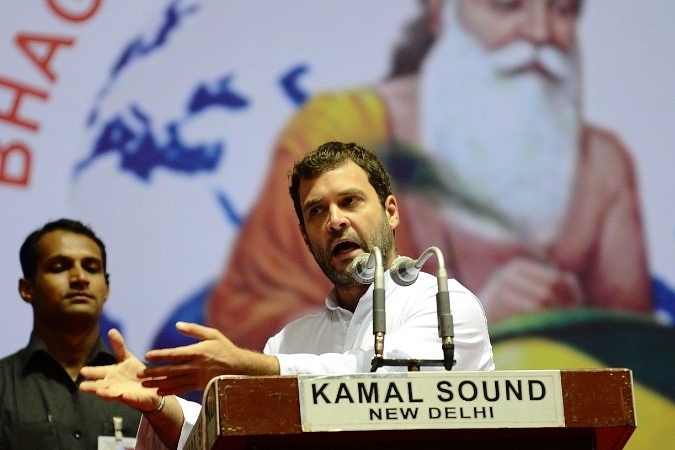Insta
Rahul Gandhi Asks For Media Ban On Reporting Income Tax Procedures In National Herald Case, Court Says No

Congress vice-president Rahul Gandhi speaking at an event in New Delhi. (GettyImages)
In a setback to Rahul Gandhi, the Delhi High Court on Wednesday (8 August), refused to grant relief to the Congress President regarding the reassessment notice which was issued by the Income Tax department, ANI has reported.
As per the above tweet, the IT department had issued a reassessment notice to the Congress President for the Financial Year 2011-12 in March 2018. The IT department had alleged that Rahul Gandhi had wilfully not disclosed his directorship in Young India Pvt Ltd.
In Rahul Gandhi’s defence, his lawyer argued that neither income nor any tax liability arose in the matter. The lawyer also tried to get the High Court to prevent the media from reporting the case. The High Court refused to give any such direction.
The ANI had earlier reported that Rahul Gandhi had previously challenged the IT department’s order seeking reopening of his tax assessments connected to National Herald and Young India transactions.
It has been alleged that in 2011 the firm Young India was created by Sonia and Rahul Gandhi using a paid up capital of 5 crore. Both Rahul and Sonia are alleged to have owned a 38 per cent stake each.
This company had then passed a resolution to offer loans to Associated Journal Limited (AJL) - the parent company of National Herald, for wiping off its 90 crore debt.
It thus was agreed that in-return of Young India wiping off its debt, AJL would transfer all its shares to the former, which meant Young India would also own AJL’s properties worth Rs 5000 crore.
Hence allegations have been made that after paying up just Rs 5 lakh, Young India managed to acquire Rs 5000 core worth of property.
Also read: The National Herald Story, Explained
Support Swarajya's 50 Ground Reports Project & Sponsor A Story
Every general election Swarajya does a 50 ground reports project.
Aimed only at serious readers and those who appreciate the nuances of political undercurrents, the project provides a sense of India's electoral landscape. As you know, these reports are produced after considerable investment of travel, time and effort on the ground.
This time too we've kicked off the project in style and have covered over 30 constituencies already. If you're someone who appreciates such work and have enjoyed our coverage please consider sponsoring a ground report for just Rs 2999 to Rs 19,999 - it goes a long way in helping us produce more quality reportage.
You can also back this project by becoming a subscriber for as little as Rs 999 - so do click on this links and choose a plan that suits you and back us.
Click below to contribute.
Latest